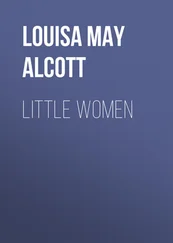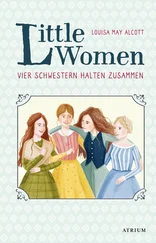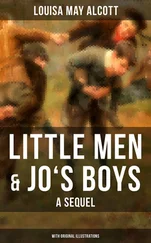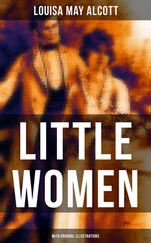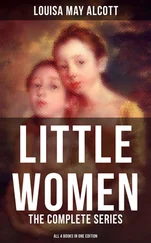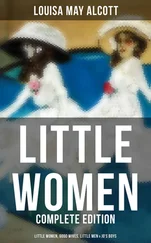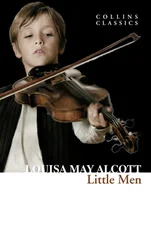Critics have often remarked upon the more masculine aspects (for her time) of Jo’s characterization: her boyish nickname, her husky voice, her desire to play only the male roles in family theatricals, the “gentlemanly” linen collar she wears, her natural use of the phrase “I’m your man,” her restless spirit, her ambition to do something splendid with her life, her desire for fame, her love of such sports as running and riding. Jo claims she wants to marry Meg herself to keep her in the family. She doesn’t care much for the company of other girls, with the exception of her sisters, of course, and she positively loathes girlish gossip; instead, she appreciates “good strong words that mean something” (p. 43). (When Amy forces Jo to accompany her on social calls in chapter 29, Jo’s humorous mockery of the girls they visit makes for one of the novel’s most unforgettable episodes.) Unlike her more traditional, ladylike sisters, Jo understands the need for social reform on a number of issues affecting women’s autonomy. Not inclined to domestic responsibility—or skill, for that matter—Jo views her future published stories as her children.
Jo’s masculine identification may begin to explain why at the end of the novel she opens a school for boys instead of for girls, which her social beliefs might dictate as appropriately reparative. Her empathy with the male gender seems to preclude any sympathy she might have for her fellow young women, and her decision to open a boys’ school, even given her unorthodox admission policies, is a fairly conventional one. Jo, depicted throughout Little Women as an eccentric, outrageously unconventional character, makes some customary choices in the end and is certainly no radical. Although her husband may be unexpected, she marries nonetheless. Overall, Jo’s feminism and mas culinity have suggested to some later commentators that a latent homosexuality lies beneath her surface, and, by extension, beneath her creator’s as well. Alcott’s own disinclination to marry and her devotion to feminist reform work and agitation have led these critics to question her sexual preferences.
Once one begins to think further about Alcott’s novel, certain contradictions emerge, particularly for more recent readers. There were always things about the March sisters that puzzled me, for example. The family complains of being poor, and indeed can’t even afford to buy each other Christmas presents, yet they keep a servant, the faithful Hannah. How impoverished, then, could the Marches be? The family’s financial situation must have been very bad indeed for Aunt March to offer to adopt one of the daughters, thus the Marches’ priorities are very interesting. Would it have been unseemly in its social circles for the family not to employ a servant? Is Hannah another charity case? That is, was it more important for the Marches to spend what extra money they did have to provide another person with a livelihood than to spend it on material luxuries (even if, as is the case with their Christmas breakfast, donated to a truly impoverished immigrant family, those material luxuries were food)?
Clearly the Marches are not as poor as Meg thinks they are. The sisters’ Christian-inspired self-sacrifice, however, can seem at times to border on masochism, which may lead one to question the girls’ motivations. Are they so generous and accommodating because they want to be, for altruism’s sake? Are they competing with each other in trying to please their impossibly good mother, the judge of their virtuousness? Or have they come to enjoy abnegation for what it represents: their worthiness to God and society? Beth and Jo’s selflessness competitions—when, for example, Jo wins a writing contest and offers Beth a trip away with her spoils—at times suggest the elaborate sacrifices of medieval saints. Beth, a household saint in her homely shrine, wears a metaphorical hair shirt and practically flagellates herself daily, even within her transcendental universe. One wonders how much Beth’s fate itself is actually a sacrifice in Alcott’s mind. Such a typical Marmee maxim as “a kiss for a blow is always best” is a bit disturbing when taken with her other advice as a reinforcement of the need for female sacrifice, even if it does echo New Testament doctrines to turn the other cheek.
Marmee displays her tremendous devotion to God in a few preachy monologues, particularly in chapter 9, yet the family, although clearly Protestant, is not described as belonging to any particular sect—perhaps another extension of the novel’s planned universality. As important as religion seems to be in their lives, the Marches offer little formal worship; they do not attend church services, for example, and their relationship to God seems very general, represented through praying privately, singing religious hymns, and imitating Bunyan’s questing hero, Christian, from The Pilgrim’s Progress. Aesthetic Amy’s fascination with the colorful, exotic Roman Catholicism of Aunt March’s French maid is thus understandable, and Marmee does not reject out of hand the religious objects, such as rosary beads and a devotional print of the Virgin Mary, that Amy brings back from her aunt’s house.
The March girls’ relationship with their mother is noteworthy for how it reinforces a rather claustrophobic household dynamic. Although many readers, particularly mothers, may find it touching that Meg reserves the “first kiss” that concludes her marriage ceremony for her mother, most others will note the utter strangeness of this choice. Marmee happily accepts what should be the new husband’s right. What’s going on here? Marmee’s total love sometimes seems to negate her daughters’ desire for adult romantic relationships, which they instead seem to fear. Marmee’s fully embraced devotion unsettles the normal course of the girls’ adolescent development from sheltered dependence into autonomous adulthood; indeed, the thought of one sister leaving the nest throws the household into emotional turmoil. Of course, nineteenth-century families thought of themselves differently than twenty-first-century families do, but Meg’s kiss is still quite unusual. Jo swears she’d never pop the family’s heretofore hermetic bubble, as Meg has done through marriage, yet she quickly moves to New York City to work and to try her talents as a writer. Proximity, apparently, does not define the word abandonment in the March household; rather, the commencement of a separate, conjugal life does. Jo seems to realize the danger—and demonstrates her progress from self-centered idealist to a more thoughtful, practical type—when she notes late in part two, “Mothers are the best lovers in the world, but . . . I’d like to try all kinds” (p. 422).
Marmee tells her daughters early on that being chosen and loved by a good husband is the best thing that could ever happen to them. Of course, this is better than being chosen by a bad one, but many readers may secretly wish that someone like Alcott hadn’t written such things! We know the author didn’t achieve this vaunted feminine ideal herself—she served instead as her family’s caretaker to the end of her life, dying just two days after her father. Glorifying marriage here reads either as a sad, perhaps even pathetic statement on the relationships her own spinster status had caused her to miss, or as a purely disingenuous commentary on what had traditionally been expected of women. Which is worse? Is Alcott bending over backward in trying not to instill her own “outlandish” beliefs in young girls? Is she trying to conciliate traditional values in order not to damage her book sales? Is this inclusion some kind of apology ripe for psychoanalytic critique? If, however, through the girls’ trials we are made to see Marmee as a comforting voice of reason, how are we to interpret her prediction, given as domestic gospel truth? The central question remains: Where is the real Louisa May Alcott, and why doesn’t she appear in Little Women? The most accommodating answer would insist that she does appear, frequently in specific autobiographical details. She isn’t present enough, however, to satisfy some critics, who view Little Women as a wasted opportunity for Alcott to have had her characters walk the feminist walk instead of, in Jo’s case in particular, make compromises.
Читать дальше
Конец ознакомительного отрывка
Купить книгу

